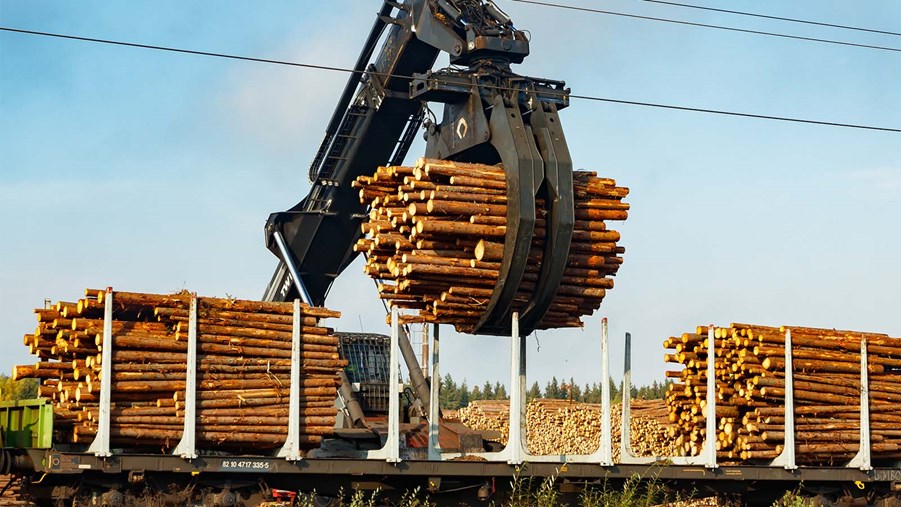
Reduced emissions and increased carbon storage are two key tools to counteract global warming.
Reduced emissions and increased carbon storage are two key tools to counteract global warming. Both are addressed in the Kyoto Protocol and the Paris Agreement and are the basis for EU climate laws and Sweden’s domestic climate legislation.
Through forestry and with fossil-free products, we contribute to keeping emissions down and to a high level of carbon storage. To highlight this contribution, we use a model that incorporates three components:
- Sequestration: Climate benefit of carbon sequestration from growing forests, forest- based products, and biogenic carbon dioxide capture.
- Substitution: Climate benefit of wood-based products and energy use replacing fossil-intensive alternatives.
- Fossil emissions: Climate impact of the forest sector’s value chain, mainly transport.

The forest industry’s climate benefit. The forestry industry’s annual climate benefit currently amounts to approximately 93 million tonnes of carbon dioxide equivalents (CO2e). The sector’s ambition is to increase this climate benefit by 30 per cent, to 122 million CO2e by 2040. Much of this gain is likely to be achieved through increased substitution.
Steps along the way
Increase carbon sequestration by five million tonnes
The road towards greater carbon sequestration is through increased growth in the forest, which in turn produces more wood-based products with long lifespans. We can also achieve this through investment in biogenic carbon dioxide capture. This can in turn be used to manufacture electro-fuels and other new products.
By 2040, the forest industry will be able to contribute by sequestering five million more tonnes of carbon a year compared to 2020.
Increase substitution by 20 million tonnes
Fossil-free products from Swedish forests will increasingly replace fossil-intensive products and fuels. This is where the forest industry can increase its climate benefit the most. By developing processes and products, a greater proportion of the raw material will become sawn timber and other important products such as packaging, clothing, hygiene products, fuels and new products. We already use the entire tree, but we can increase climate benefits even further by continually improving the efficiency with which we use every part of the tree.
Increased resource efficiency also includes the use of waste. Some waste arises in the forest industry that is difficult to find uses for. From pulp and paper mills, this is mainly ash and various types of sludge. The industry must intensify its efforts to find solutions for how such waste can be converted into products. Waste from other industries, such as textiles, can become inputs in our production and thus contribute to a more resource-efficient and circular use of raw materials and other substances.
In 2040, the forest industry shall contribute to an additional 20 million tonnes in increased substitution a year compared to 2020.
Zero fossil emissions
Fossil emissions from the Swedish forest industry must be reduced from today’s four million tonnes of carbon dioxide a year to zero. This will be possible when we reorganise our land-based domestic transport.
Key conditions
For the forest industry to fulfil its pledges, we will need help along the way. Here are some key conditions. Together, we are shaping the future!
- More research and knowledge on the importance of substitution
effects in climate initiatives. - Introduce limits for products’ climate impact.
- Increase research in process and product development.
- More joint investments for increased growth in the forest sector, including the development of management methods and the reduction of grazing damage from wild animals.
- Greater access to fossil-free electricity throughout Sweden. Investments in the capture and product extraction of biogenic carbon dioxide will require extremely large amounts of electricity.





